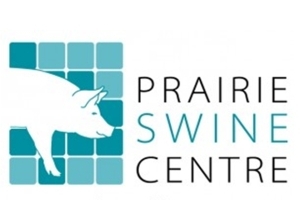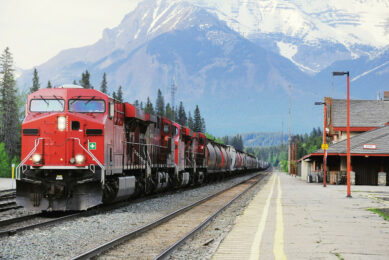RESEARCH: Swine body composition indifferent to temperature regime

Researchers at Canada’s Prairie Swine Centre have published a study comparing the effects of three temperature regimes, used in industry for fattening pigs, on swine body composition and ammonia emission.
The scientists conclude that an intermediate temperature regime between 21.7°C and 17.2°C is the most cost effective.
The objective of this study was to compare the effects of three strategies set temperatures for fattening pigs on performance, emissions and the energy needs for heating and ventilation in Quebec. The three regimes were identified based on information from the literature and industry practices.
1. ‘Hot’ (22.2 to 20.0°C);
2. ‘Intermediate’ (21.7 to 17.2°C); and
3. ‘Cold’ (21.1 to 14.4°C).
Two trials of 11 weeks each in 12 controlled environment chambers each housing three castrati for fattening from 36 to 120 kg were done. Each temperature regime experiment was repeated eight times. The weight of the pigs, drinking water and feed were measured weekly. Ambient temperature, relative humidity, ventilation rate and emissions were continuously monitored. Slaughter data were collected.
Performance
No significant difference in performance or body composition were observed between the three temperature regime strategies. Average daily gain, average daily feed intake and feed conversion mean of this study were, respectively, 1.09 kg, 2.81 kg and 2.59 kg feed/ kg gain. Strategies had no significant impact on measures of body composition.
Emissions
There was a significant 25% reduction of ammonia emissions strategy with intermediate (0.17 g/ day per kg pork) compared to the hot strategy (0.22 g/ day per kg pork). Methane emissions were significantly reduced by 42% with the cold regime strategy (0.36 g/ day kg pork compared to 0.62 g/ day for the strategy kg pork hot).
Heating and ventilation
The cold regime strategy reduces the heating needs from 58 to 60% on an annual basis from the hot regime strategy. On the downside, the energy cost associated with dual fan operation with the cold regime strategy is greater throughout the year. Ventilation is more than 96% of the energy cost considering the cost for heating. Thus, the use of the strategy cold year round does not seem the best avenue of energy point of view. However, this strategy could be used in winter to take advantage of improved air quality. For the rest of the year, a control strategy adjusting differential ventilation could be applied to prevent an increase in energy consumption in operating the fans.
Summary
In summary, the cold regime strategy improves environmental conditions and saves on heating. Gains made, however, are offset by a higher energy cost of ventilation. Considering all factors measured during this project (zoo-technical performances, gaseous emissions and energy requirements), it seems that the intermediate regime strategy is the best compromise between the hot and cold regime strategies for all the evaluated parameters. Considering the nature of the tests performed during this project (small rooms with little animals), a validation of the intermediate strategy in commercial farms is desirable before granting a general recommendation.
Source: Prairie Swine Centre (report in French)
Related website:
• Prairie Swine Centre











